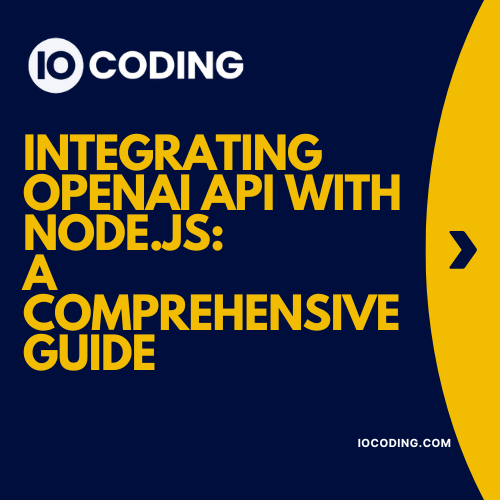Table of Contents

Introduction to Integrating OpenAI API with Node.js
Integrating OpenAI API with Node.js application can unlock a world of possibilities, from advanced text generation to sentiment analysis and more. This guide will walk you through the steps needed to integrate the OpenAI API with Node.js, providing you with practical examples and best practices. By following this guide, you can leverage the powerful features of OpenAI to enhance your Node.js applications.
Keywords: Node.js OpenAI integration, OpenAI API Node.js, Node.js text generation, OpenAI Node.js tutorial
1. Setting Up the Node.js Project
Installing Node.js and npm Before we begin, make sure you have Node.js and npm installed on your machine. You can download and install them from the Node.js official website.
Initializing the Project Start by creating a new directory for your project and initializing it with npm:
mkdir openai-nodejs
cd openai-nodejs
npm init -y
Installing Required Packages We need to install the Axios package to handle HTTP requests and dotenv for managing environment variables:
npm install axios dotenv
2. Configuring Environment Variables
Create a .env file in the root of your project to securely store your OpenAI API key:
OPENAI_API_KEY=your_openai_api_key
Load these environment variables in your Node.js application by requiring dotenv at the beginning of your main file:
require('dotenv').config();
3. Creating the OpenAI Service
Service Class Create a new file openaiService.js to handle interactions with the OpenAI API:
const axios = require('axios');
class OpenAIService {
constructor() {
this.client = axios.create({
baseURL: 'https://api.openai.com/v1',
headers: {
'Authorization': `Bearer ${process.env.OPENAI_API_KEY}`,
'Content-Type': 'application/json'
}
});
}
async generateText(prompt) {
const response = await this.client.post('/completions', {
model: 'text-davinci-002',
prompt: prompt,
max_tokens: 100
});
return response.data;
}
}
module.exports = OpenAIService;
4. Making API Requests
Creating a Controller Create a new file openaiController.js to manage API requests and responses:
const OpenAIService = require('./openaiService');
class OpenAIController {
constructor() {
this.openAIService = new OpenAIService();
}
async generateText(req, res) {
const prompt = req.body.prompt;
try {
const response = await this.openAIService.generateText(prompt);
res.json(response);
} catch (error) {
res.status(500).json({ error: error.message });
}
}
}
module.exports = OpenAIController;
Defining Routes Create an index.js file to set up the server and define routes:
const express = require('express');
const bodyParser = require('body-parser');
const OpenAIController = require('./openaiController');
const app = express();
const port = 3000;
app.use(bodyParser.json());
const openAIController = new OpenAIController();
app.post('/generate-text', (req, res) => openAIController.generateText(req, res));
app.listen(port, () => {
console.log(`Server is running on http://localhost:${port}`);
});
5. Example Use Cases
Text Generation Integrate text generation into your application by sending a prompt to the OpenAI API and displaying the generated text to the user.
Sentiment Analysis Enhance your application by analyzing user-provided text for sentiment, providing insights into the emotions conveyed in the text.
Chatbot Integration Create a sophisticated chatbot that uses the OpenAI API to generate intelligent responses based on user inputs.
6. Best Practices and Security
API Key Security Never expose your API key in client-side code. Store it securely in environment variables or use server-side proxies.
Rate Limiting and Error Handling Implement rate limiting to manage API usage and include comprehensive error handling to provide feedback and ensure a smooth user experience.
Conclusion
Integrating the OpenAI API with Node.js opens up a plethora of possibilities for building intelligent applications. By following this guide, you can set up and start using OpenAI’s powerful features in your Node.js projects. For more detailed information, visit the OpenAI API documentation and the Node.js documentation.
For software development services, feel free to contact us.
About IOCoding
At IOCoding, we specialize in providing top-notch IT solutions and development tools tailored to your needs. Our services include full-stack development, front-end and back-end solutions, AI and machine learning integrations, and more. Whether you’re looking to build robust web applications, enhance your software with AI capabilities, or streamline your development process, our experienced team is here to help. We combine technical expertise with innovative thinking to deliver exceptional results for businesses and developers alike. Explore our services and discover how IOCoding can transform your tech projects into successful, cutting-edge solutions.



